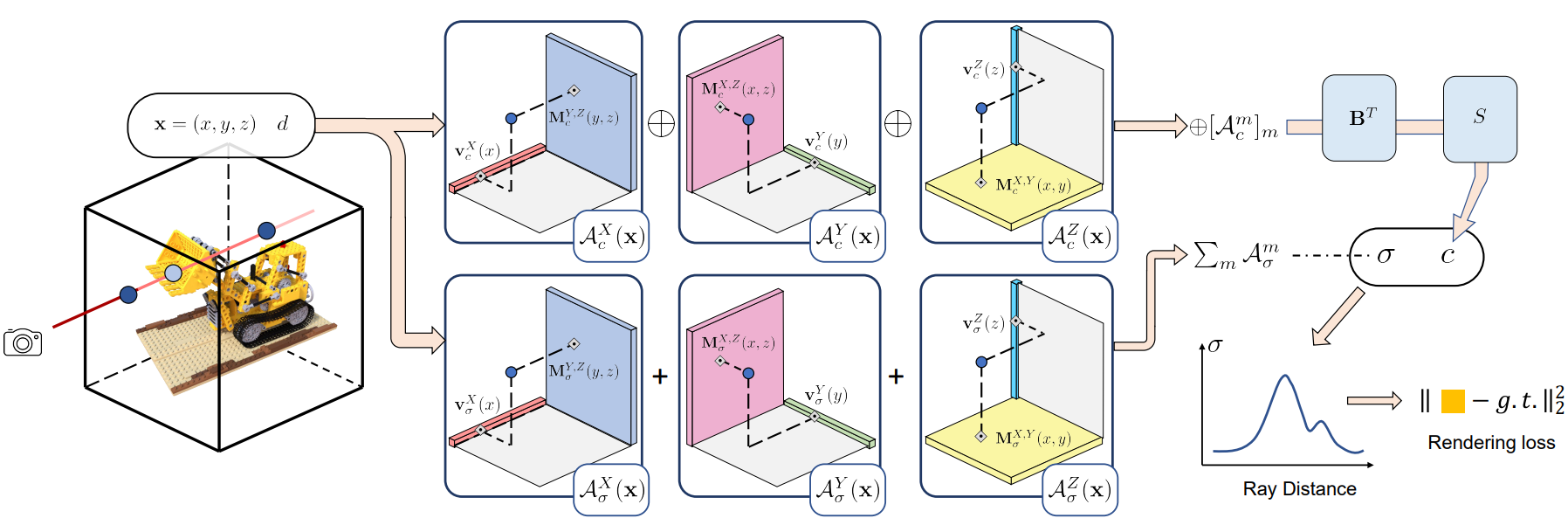TensoRF#
Tensorial Radiance Fields
Running Model#
ns-train tensorf
Overview#

TensoRF models the radiance field of a scene as a 4D tensor, which represents a 3D voxel grid with per-voxel multi-channel features. TensoRF factorizes the 4D scene tensor into multiple compact low-rank tensor components using CP or VM modes. CP decomposition factorizes tensors into rank-one components with compact vectors. Vector-Matrix (VM) decomposition factorizes tensors into compact vector and matrix factors.

TensoRF with CP(left) and VM(right) decompositions results in a significantly reduced memory footprint compared to previous and concurrent works that directly optimize per-voxel features, such as Plenoxels and PlenOctrees. In experiments, TensoRF with CP decomposition achieves fast reconstruction with improved rendering quality and a smaller model size compared to NeRF. Furthermore, TensoRF with VM decomposition enhances rendering quality even further, while reducing reconstruction time and maintaining a compact model size.